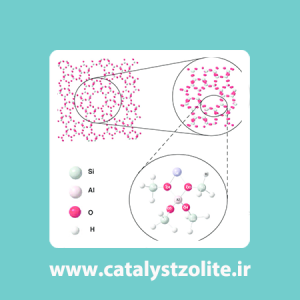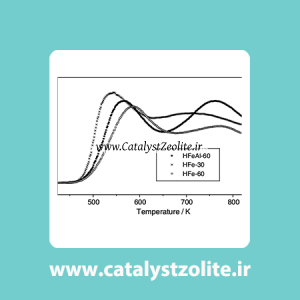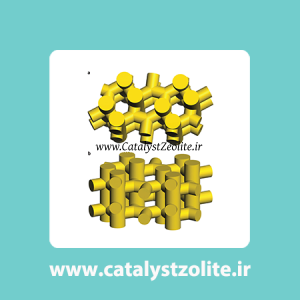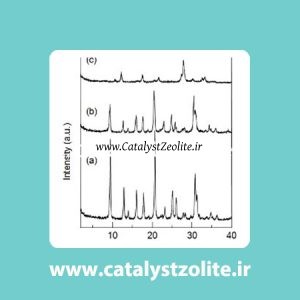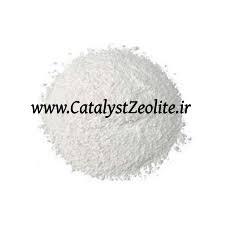|
Product Details:
Payment & Shipping Terms:
|
H Type Cas 1318 02 1 Beta Zeolite Powder CAS 1318 02 1
Description
| SiO2/Al2O3: | 20-200 | Color: | White Powder |
|---|---|---|---|
| Total Specific Surface: | 540 M2/g | Microporous Specific Surface: | 430-460m2/g |
| CAS: | 1318-02-1 | ||
| High Light: |
CAS 1318 02 1 Zeolite Powder
|
||
Phosphorous-Modified Beta Zeolite and Its Performance in Vacuum Gas Oil Hydrocracking Activity
SiO2/Al2O3 Mole Ratio: 25-200
Nominal Cation Form: Sodium/Hydrogen
Na2O Weight %: 0.1
Surface Area, m2/g: 540
Zeolite beta
β molecular sieves have three mutually intersecting 12-ring channels, it is only 12 yuan a three-dimensional pore structure of zeolite ring.
β zeolite having high hydrocracking, hydroisomerization catalytic activity and adsorption capacity of linear paraffins, and good resistance to sulfur and nitrogen poisoning. It can be used in the petrochemical industry of benzene with propylene olefin system cumene, cumene metathesis diisopropylbenzene, toluene Isopropylation, aromatics alkylation, transalkylation diisopropylbenzene, propylene ether, methanol aryl structured, propylene oxide and acetic ether of phenol methylation, methylation of aniline, toluene transalkylation preparation of cumene and toluene disproportionation and transalkylation reaction with a catalyst such. β-type USY zeolite used in conjunction with the increase of the octane number of gasoline. In the fine chemical industry, β zeolite has excellent activity and selectivity in the dehydration deamination.
Beta zeolite 25
| Item | Unit | Min | Typical | Max | Analytical Method |
| Relative crystallinity | % | 78 | 80 | X-ray diffractometer | |
| Crystal size | nm | 50 | 70 | ||
| Total specific surface | m2/g | 500 | 540 | N2 adsorption | |
| Microporous specific surface | m2/g | 430 | 460 | N2 adsorption | |
| Pore volume | ml/g | 0.3 | 0.4 | N2 adsorption | |
| silica-alumina ratio | / | 23 | 25 | 27 | XRF |
| Na2O | wt% | 0.1 | Flame photometric analysis | ||
| SO42- | wt% | 0.4 | XRF | ||
| Cl- | wt% | 0.2 | chemical analysis | ||
| L.O.I. | wt% | 10 | Gravimetric analysis | ||
| D50 | um | 7 | laster scatter distrioution | ||
| D90 | um | 9 | laster scatter distrioution |
Beta zeolite 28
| Item | Unit | Min | Typical | Max | Analytical Method |
| Relative crystallinity | % | 82 | 86 | X-ray diffractometer | |
| Crystal size | nm | 200 | 300 | ||
| Total specific surface | m2/g | 580 | 600 | N2 adsorption | |
| Microporous specific surface | m2/g | 460 | 480 | N2 adsorption | |
| Pore volume | ml/g | 0.35 | 0.37 | N2 adsorption | |
| silica-alumina ratio | / | 26 | 28 | 30 | XRF |
| Na2O | wt% | 0.05 | Flame photometric analysis | ||
| SO42- | wt% | 0.4 | XRF | ||
| Cl- | wt% | 0.2 | chemical analysis | ||
| L.O.I. | wt% | 10 | Gravimetric analysis | ||
| D50 | um | 7 | laster scatter distrioution | ||
| D90 | um | 9 | laster scatter distrioution |
Beta zeolite 30
| Item | Unit | Min | Typical | Max | Analytical Method |
| Relative crystallinity | % | 78 | 80 | X-ray diffractometer | |
| Crystal size | nm | 50 | 70 | ||
| Total specific surface | m2/g | 500 | 540 | N2 adsorption | |
| Microporous specific surface | m2/g | 430 | 460 | N2 adsorption | |
| Pore volume | ml/g | 0.3 | 0.4 | N2 adsorption | |
| silica-alumina ratio | / | 28 | 30 | 32 | XRF |
| Na2O | wt% | 0.1 | Flame photometric analysis | ||
| SO42- | wt% | 0.4 | XRF | ||
| Cl- | wt% | 0.2 | chemical analysis | ||
| L.O.I. | wt% | 10 | Gravimetric analysis | ||
| D50 | um | 7 | laster scatter distrioution | ||
| D90 | um | 9 | laster scatter distrioution |
Beta zeolite 50
| Item | Unit | Min | Typical | Max | Analytical Method |
| Relative crystallinity | % | 78 | 80 | X-ray diffractometer | |
| Crystal size | nm | 50 | 70 | ||
| Total specific surface | m2/g | 500 | 540 | N2 adsorption | |
| Microporous specific surface | m2/g | 430 | 460 | N2 adsorption | |
| Pore volume | ml/g | 0.3 | 0.4 | N2 adsorption | |
| silica-alumina ratio | / | 48 | 50 | 52 | XRF |
| Na2O | wt% | 0.1 | Flame photometric analysis | ||
| SO42- | wt% | 0.4 | XRF | ||
| Cl- | wt% | 0.2 | chemical analysis | ||
| L.O.I. | wt% | 10 | Gravimetric analysis | ||
| D50 | um | 7 | laster scatter distrioution | ||
| D90 | um | 9 | laster scatter distrioution |
Zeolite beta is used in isomerization of waxes, and Friedel Crafts reactions (alkylation and acylation)Zeolite β, hydrogen is used as a molecular sieve, filter, adsorbent, catalyst, drying agent, cation exchanger, dispersing agent and detergent builder. It serves as an acid catalyst and utilized as an alternative to the known methods for protection of alcohols as tetrahydropyranyl ethers and the deprotection of tetrahydropyranyl ethers. It is also used in the stereoselective Meerwein-Ponndorf-Verley reduction of ketones. Further, it is used as an efficient and recyclable catalyst for the tetrahydropyranylation of alcohols and phenols
We can produce beta zeolite according customers demand.
Our zeoite and catalyst factory are in follow.
The fixed-bed catalyst production project covers an area of about 5,000 square meters and a building area of 2,000 square meters. It is fully equipped with public works and has more than 40 sets of catalyst production equipment. It has a complete fixed-bed catalyst production system, and the production units that can be carried out mainly include: pretreatment of catalyst raw powder, impregnation, molding, drying/roasting, screening and environmental protection treatment, etc., which can meet the production of various fixed-bed catalysts.

